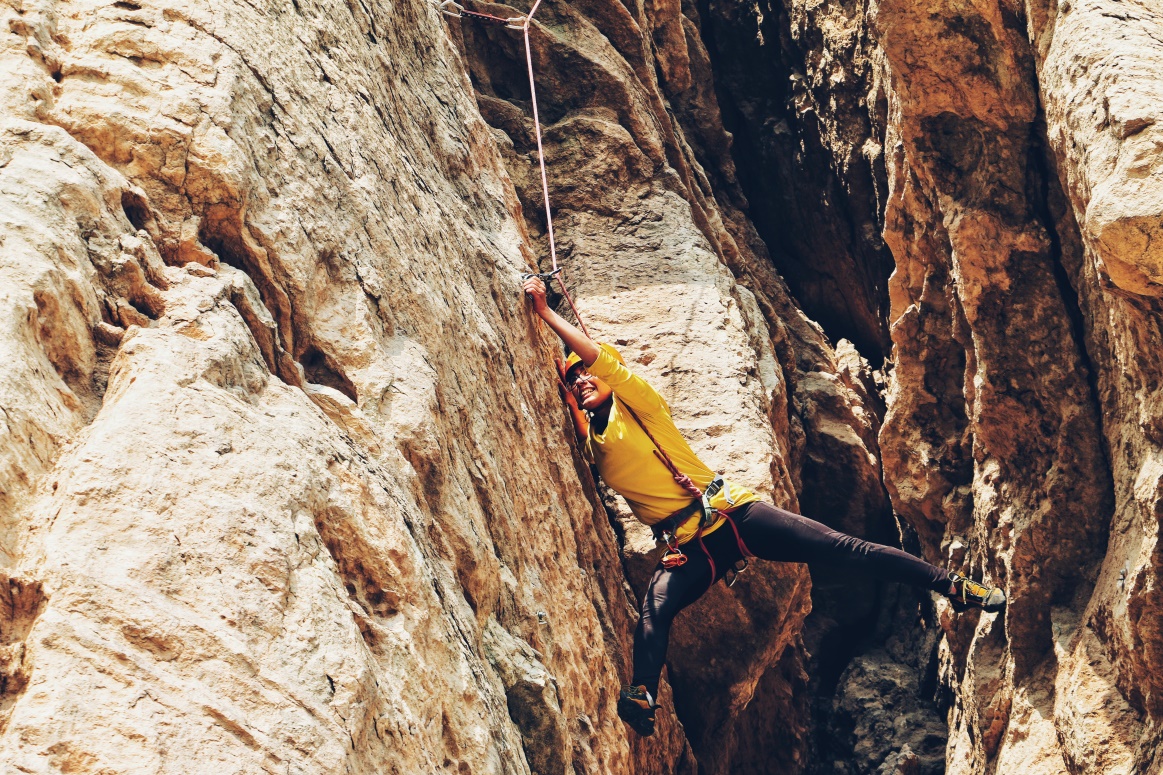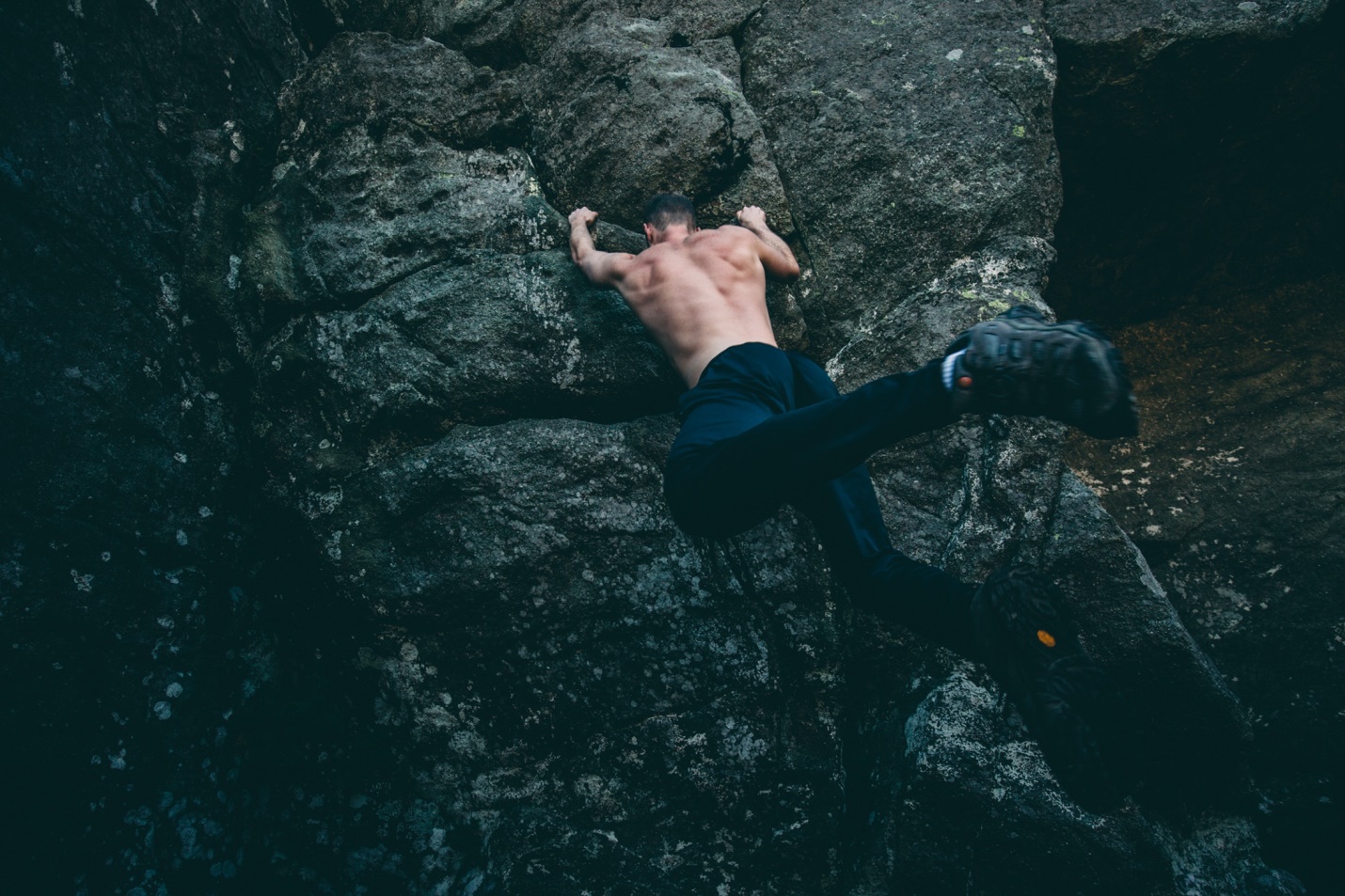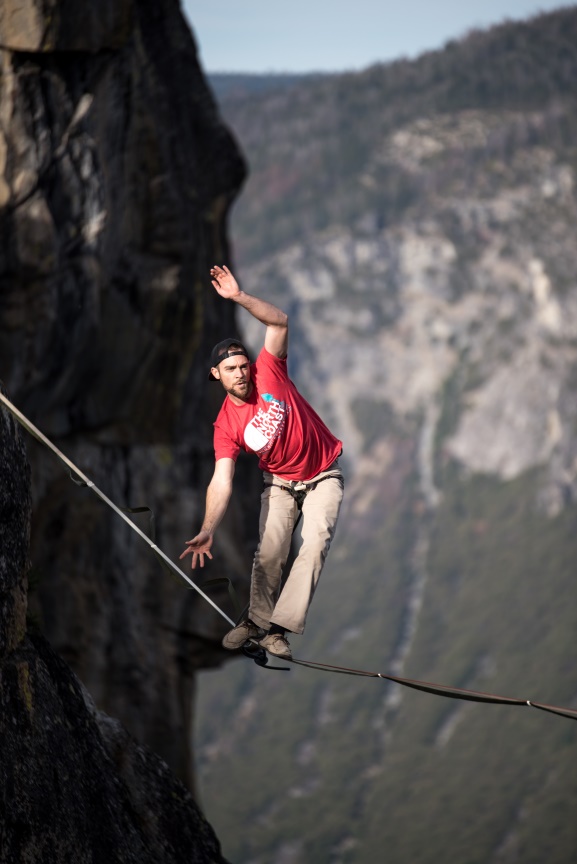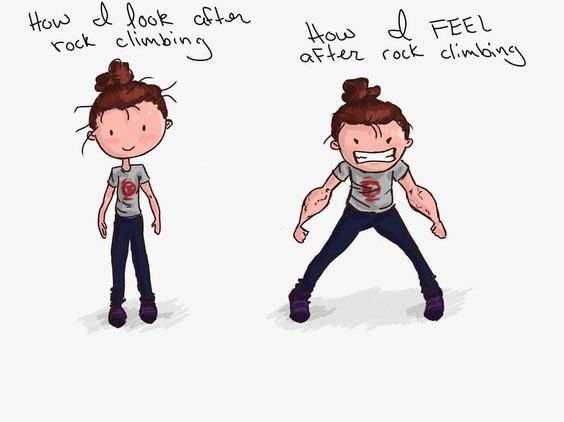Rock climbing may well be one of the best (and most fun) workouts for your whole body. If you’ve ever tried climbing, then you know it requires muscle engagement from all areas - arms, core, back, legs, and more.
No matter what type of climbing you do, be it bouldering or route climbing, it will build muscle in certain areas of your body which will help you climb more efficiently later. The areas you'll see the biggest transformation are in your forearms, back, arms and core.
When you climb, your whole body must hold tension to keep you on the wall.
Imagine being halfway up a 50 foot climb, nothing but your own strength keeping you from falling off the wall.
Your toes dig in to miniature footholds while your arms strain to reach the next hold. Your core stays tight to keep your upper body close to the wall and your legs shake as they work to keep your feet from popping off the small foot jibs.
Which Muscle Groups are Used in Rock Climbing?
It may be easier to discuss which muscle groups are not used in climbing, since your entire body is required for the activity.
Here, we’ll go over the major muscles used for climbing to give you an idea of which areas of your body are getting worked the most on the wall.
Upper Body
It goes without saying that climbing works out your arms.
The forearm flexors, which are used to open and close your hands around objects (like a rock climbing hold) are the primary arm muscles utilized in climbing.
They are also the smallest muscles used to climb, meaning they fatigue quickly, resulting in what climbers commonly refer to as a “flash pump.”
As beginner climbers develop more technique, the pumpy feeling in the forearms after climbing should start to fade.
More experienced climbers rely heavily on the big muscles of the lower body to push themselves up the wall, rather than strictly pulling themselves up with their arms. Of course, climbers also rely on their biceps to hang on to the wall, especially on steep or overhanging routes.
The other major upper body muscles worked while climbing are located on your back.
The lats (short for latissimus dorsi) are large, wing-shaped muscles located on the side of your back. They engage during a pull-up motion, and thus are used to pull the body upward toward the next handhold.
Your rhomboids (which retract your shoulder blades) are used to hold your torso in close to the rock face.
Lastly, the anterior deltoid (a muscle located in your shoulder) pulls your upper arm back so you can make those big, reachy moves on the wall.
The lats, rhomboids, and deltoids all work together to pull your body up toward your hands and to hold your chest in close to the wall while you climb.
Middle Body or Core
Before discussing the lower body, I want to mention one of the most important and oft overlooked areas that is required for climbing - the core.
The abdominal muscles are used as stabilizers during climbing, meaning without them it would be very difficult to keep your body secure on the rock.
The abdominals especially come into play on steep roofs, when your core must contract to keep the pelvis in line with the chest while you’re hanging nearly upside down.
Engaging your core on overhanging routes helps to alleviate the load placed on the forearms, biceps, and back, allowing you to climb longer with decreased fatigue in the upper body.
Lower Body
As novice climbers learn better technique, they will rely less on their upper body to pull them up the wall and start to pay more attention to how their lower body can help push them upwards.
The quadriceps (four large muscles located in the front of your thigh) are used to straighten the lower leg from a bent position, as when stepping from one foothold to the next.
The calf is comprised of two muscles - the soleus and gastrocnemius.
These muscles are used to raise the heel, which is important when you must stand on your toes to reach a hold high above your head.
They also prevent your heel from dropping when you are perched on a razor thin ledge with just the tips of your toes or the edge of your foot keeping you on the barely perceptible hold.
So Does Climbing Actually Build Muscle Mass?
Yes and no.
There is no simple answer to whether climbing actually increases muscle mass because the results are so individualized and variable.
Within the first three months when a new person starts climbing, they will inevitably experience muscle gain if they are climbing 2-3 times a week for at least an hour per session.
After the initial increase in muscle mass, climbers don’t continue building larger muscles, which is why the climber’s physique is usually thought of as lean, cut, and toned - not “big.”
When climbing, it is important to carry as little weight up the wall as possible.
Muscle does not actually weigh more than fat, but it is far more dense, meaning it takes up less space than fat.
For efficient climbing, you want to focus on achieving a high strength-to-bodyweight ratio.
For this reason, the best climbers are the ones who focus on slimming down fat to promote muscle tone without becoming overly muscular.
Climbing is a great combination of cardio and strength-training, making it an effective total-body workout.
However, climbers must be careful to avoid nagging muscle imbalances that can occur when climbing is your only outlet for physical exercise.
New climbers are especially prone to building imbalances in their musculature, which can be avoided with a bit of extra care at the forefront of your training.
How to Avoid Muscle Imbalances
In the physically demanding sport of rock climbing, it is easy to unwittingly rely on one half of your body more than the other, thereby resulting in pesky muscle imbalances that could lead to more serious injuries down the line.
Think about it next time you climb - you reach with your right hand while moving only your right foot up to the next hold.
You deathgrip the rock with your right hand while you clip quickly with the left. You lock off your right arm as you place that number 2 cam in the splitter crack.
It is so easy to accidentally create a lopsided build while climbing, simply by not paying attention.
To avoid or correct muscle imbalances to become a stronger, more well-rounded climber, simply follow these useful guidelines and make sure to notice when you’re favoring one side over the other while on the wall!
The first thing you need to do is identify your weaknesses.
Do you have any old injuries that didn’t heal quite right that are now causing you to favor a stronger limb?
Do you tend to only lock off with one arm or the other, or clip with the same hand, even if it means reaching across your body?
Ask a close friend or hire a personal trainer to watch you while you climb. An objective observer can often notice minor imbalances long before we are even aware of them in our own body.
You can also ask them to record you while climbing or while you perform climbing-related exercises like push-ups or pull-ups. That way, you can have visual evidence of which side you’re favoring to help you correct it in the future.
Once you have identified your particular imbalance, the next step is to build overall base strength.
You will never be able to correct a muscle imbalance without first creating a solid foundation in your body that you can then improve upon.
Your first job is to learn the correct form for exercises to avoid exacerbating current muscle imbalances and prevent unbalanced muscle development in the future.
Check out this awesome article from www.climbing.com for exercises specifically designed to help you correct and prevent muscle imbalances while climbing!
Conclusion
The verdict is still out on whether or not strictly climbing actually builds muscle.
As mentioned in the introduction, most beginner climbers will rapidly increase their muscle mass for the first 3 - 6 months of their climbing career if they climb frequently at a high volume.
Very little evidence exists to suggest that experienced climbers continue building muscle at any measurable rate if their training regimen only involves climbing.
After the initial increase in muscle mass (and potential development of muscle imbalances if beginner climbers are not careful), body composition tends to remain relatively constant unless weight training outside of climbing is introduced.
But it doesn’t really matter what you look like on the outside while you’re climbing, as long as you feel great about yourself on the inside, right?
So stop worrying about whether you’re going to look like The Rock after climbing a couple routes in the gym, and start focusing on that delicious elated feeling you get after sending a project you’ve been working on for months.
Just remember, “the best climber at the crag is the happiest.”





